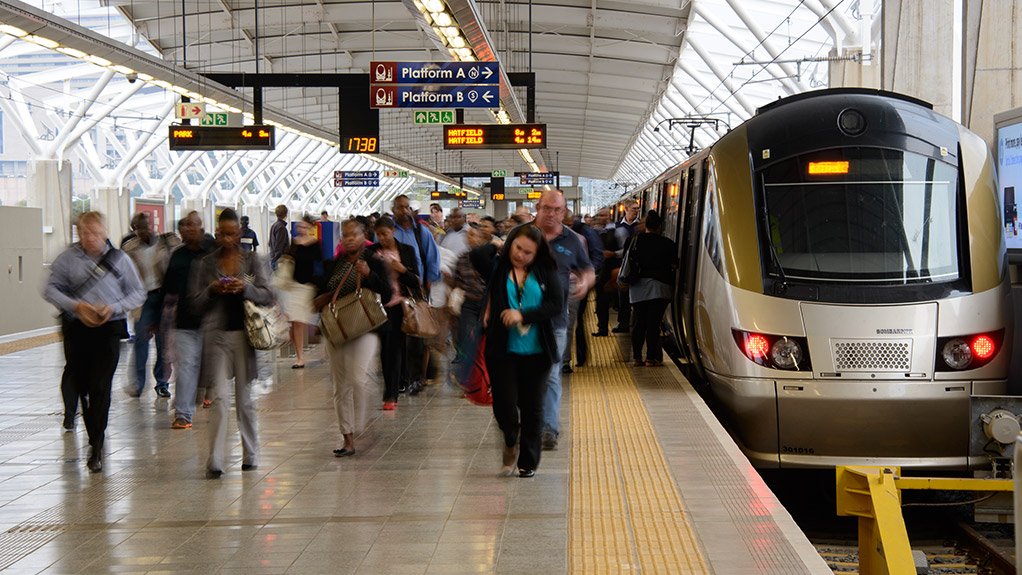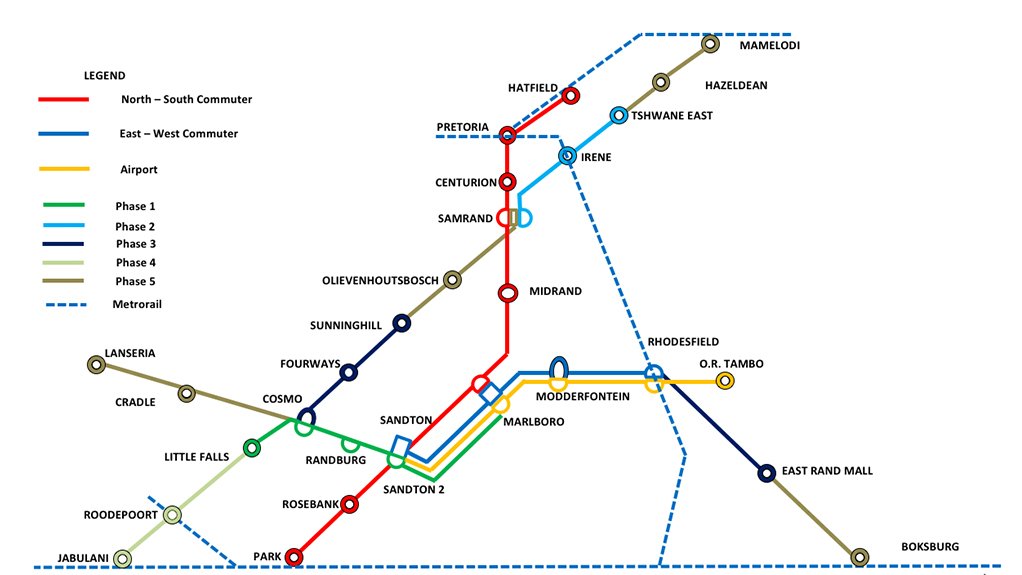Proposed Gautrain expansion faces heavy resistance by committee
The proposed Gautrain expansion project was harshly criticised as a vanity project, a white elephant and a waste of government finances by members of the Gauteng Legislature’s Portfolio Committee on Roads and Transport, which convened on August 16 to discuss its viability.
The committee conducted a Focus Intervention Study (FIS) to investigate how the proposed expansion would address Gauteng’s public transport needs and challenges.
The first phase of the Gautrain extension is proposed to cover the area from Little Falls to Cosmo City, through Randburg and Sandton, ending in Malboro. This phase was initiated in October 2018.
Gautrain Management Agency (GMA) CEO William Dachs highlighted to the committee members the urgent need to address rapidly growing congestion on Gauteng’s road network by expanding the Gautrain network.
He also illustrated the economic benefit that such an investment would have on the region and, subsequently, on the country.
However, numerous committee members argued that the existing Gautrain had failed to prove its value in decongesting the roads over the past decade, with some calling it a “failed project”.
The reasons for this “failure” were attributed to several factors, among them ill-conceived placement of Gautrain stations, inadequate supporting public transport infrastructure and services and the perception that the service was not inclusive enough and that it failed to cater to lower-income groups.
The most egregious criticism levelled against the Gautrain and any proposed expansion thereof was the issue of its high fare prices, which are compounded by additional costs incurred by consumers such as parking fees and supplementary public transport fees – such as taxi or bus fares.
One committee member pointed out that it was far more cost effective to take his family from Sandton to OR Tambo airport by Uber than by Gautrain – illustrating how the high cost undermined the intention of the Gautrain project to provide relief to the road network.
In general, the cost of driving is equivalent to or cheaper than using the Gautrain – even amid the current high fuel prices, committee members argued.
It was also argued that driving on the road was often faster or at least equivalent to taking the Gautrain – even with traffic congestion factored in. Although the actual trip on the train was fast, when one factored in travel times to and from the station on either end, as well as waiting times for not only the train but other supporting public transport services such as buses and taxis, a trip on the Gautrain could often take longer than driving.
The proposed expansion to the Gautrain network would comprise a total of 19 new stations across the cities of Tshwane, Ekurhuleni and Johannesburg. Phase 1 of the expansion would amount to 32 km of additional rail infrastructure being built out of the 148 km total planned for the whole expansion.
The committee had received several submissions from organised groups, including residents of the Sharonlea area, whose residential area falls on the proposed route of the Phase 1 expansion. They raised concerns such as the likelihood of their land being expropriated and their homes consequently affected, as well as restricted access to essential services and schools in the area.
Other registered concerns were whether the new routes would cater for most commuters and solve public transport challenges in the province, and how the Gautrain would link with other public transport modes – given that the current system does not respond to challenges faced by the majority of commuters.
The proposed financial expenditure to build the system was another concern raised by committee members, many of whom believed the fiscus would be better steered towards upgrading and maintaining deteriorating road infrastructure, or towards investments in electricity infrastructure.
“I’m not saying that we shouldn’t build new roads. What I’m saying is that they won’t be enough,” Dachs said in response to this criticism.
The GMA had scheduled public engagement sessions with different categories of affected and interested stakeholders, and presented its public engagement strategy and efforts to the committee.
The GMA, however, was met with numerous complaints that feedback from the public had largely been ignored, with many different examples quoted by committee members and other members of the public who were present.
The public engagement process was called a “farce”, with committee members saying the extension would go ahead regardless of the public’s concerns because the decision to build it had already been made, and that the GMA was merely “ticking boxes”.
The FIS is part of the committee’s oversight mandate under the Gauteng Department of Roads and Transport, to gauge whether the extension project will solve Gauteng’s transportation problems and deliver the long-overdue relief to commuters that it promises to achieve.
The FIS is part of the committee’s comprehensive budget review process for the current financial year, through which it scrutinises all budgeted initiatives of the department to ensure they contribute to sustainable service delivery.
Article Enquiry
Email Article
Save Article
Feedback
To advertise email advertising@creamermedia.co.za or click here
Comments
Press Office
Announcements
What's On
Subscribe to improve your user experience...
Option 1 (equivalent of R125 a month):
Receive a weekly copy of Creamer Media's Engineering News & Mining Weekly magazine
(print copy for those in South Africa and e-magazine for those outside of South Africa)
Receive daily email newsletters
Access to full search results
Access archive of magazine back copies
Access to Projects in Progress
Access to ONE Research Report of your choice in PDF format
Option 2 (equivalent of R375 a month):
All benefits from Option 1
PLUS
Access to Creamer Media's Research Channel Africa for ALL Research Reports, in PDF format, on various industrial and mining sectors
including Electricity; Water; Energy Transition; Hydrogen; Roads, Rail and Ports; Coal; Gold; Platinum; Battery Metals; etc.
Already a subscriber?
Forgotten your password?
Receive weekly copy of Creamer Media's Engineering News & Mining Weekly magazine (print copy for those in South Africa and e-magazine for those outside of South Africa)
➕
Recieve daily email newsletters
➕
Access to full search results
➕
Access archive of magazine back copies
➕
Access to Projects in Progress
➕
Access to ONE Research Report of your choice in PDF format
RESEARCH CHANNEL AFRICA
R4500 (equivalent of R375 a month)
SUBSCRIBEAll benefits from Option 1
➕
Access to Creamer Media's Research Channel Africa for ALL Research Reports on various industrial and mining sectors, in PDF format, including on:
Electricity
➕
Water
➕
Energy Transition
➕
Hydrogen
➕
Roads, Rail and Ports
➕
Coal
➕
Gold
➕
Platinum
➕
Battery Metals
➕
etc.
Receive all benefits from Option 1 or Option 2 delivered to numerous people at your company
➕
Multiple User names and Passwords for simultaneous log-ins
➕
Intranet integration access to all in your organisation



















